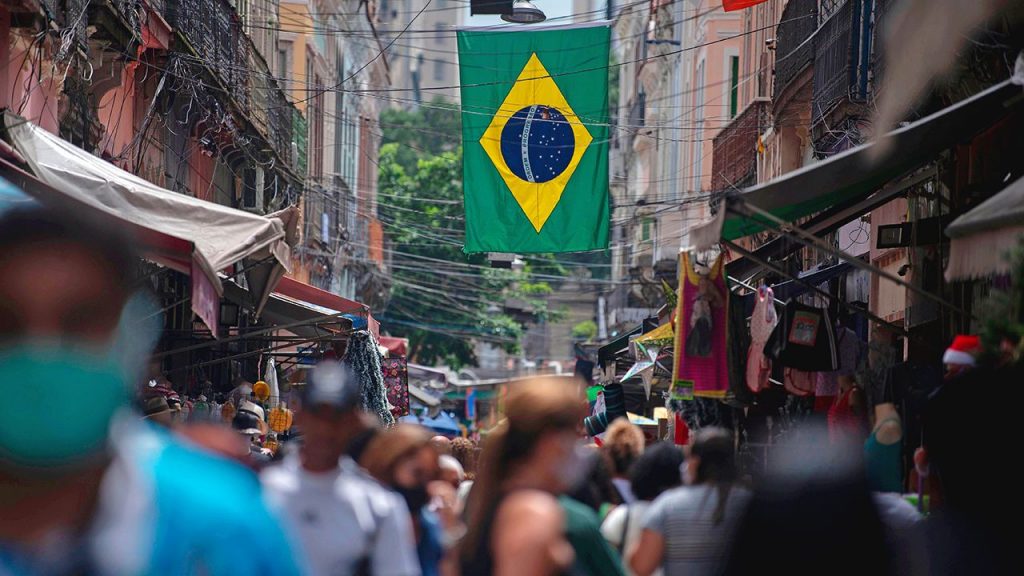Opinion: Brazil as a case study for market uncertainty
The Latin American giant presents a compelling investment case, but timing will be crucial

Global stock markets closed 2023 on a high note, buoyed by expectations that 2024 will see more central banks cutting rates in response to slower growth. Inflation has fallen fast and the market expects it will become less of a priority for central bankers in 2024.
Market participants might be getting too optimistic, though, if they’re basing their predictions on inflation over the past three months, which has been running at levels consistent with long term targets of around 2% to 2.5%. There’s a risk that central banks will cut rates too soon, fueling a renewed surge in inflation.
Alongside many others, the Fed, the BoE and the ECB are expected tochange their policy stance this year, but markets are likely to be disappointed both by the promptness with which they act and the aggressiveness that they show. After a sharp rally since October, current market valuations leave little room for such disappointment.
Soft landing, hard realities
Interest-rate hikes may be over but the inertial pull they exert has yet to feed through completely. Neither have the spillover effects of slower growth in the developed world reached the emerging economies.
This environment is hardly positive for risky assets, and it’s fair to expect a correction sometime in the first half of the year. The catalyst for such a correction is likely to come either from surprises around interest-rate cuts, from slower-than-expected growth, or from a combination of both.
Brazil may become a case in point. The second-largest economy in the Americas showed surprising resiliency over the first half of 2023, but it has been losing momentum. The boost it received from higher fiscal spending after President Lula da Silva’s inauguration and from higher demand for its agricultural exports seems to be fading.
As a result, Brazil’s economy is expected to have slowed from the 2.9% observed in 2023 to 1.5% in 2024. The slowdown is likely to follow even as the central bank adds several rate cuts to the 100 bps it already cut during 2023. Policy rates are expected to fall to 9% from the current 11.75%.
Those rate cuts are unlikely to meaningfully boost growth because real rates are still very high, which tends to discourage private investment and encourage people to save rather than consume. Inflation is back at the roughly 4% level experienced pre-Covid, but policy rates would still have to be cut by over five percentage points to return to pre-Covid levels. Wary of sparking renewed inflation, the central bank is unlikely to cut that deeply.
This combination is likely to lure investors to the domestic bond market. In 2023, high and falling interest rates combined with appreciation in the country’s currency, the real, to generate double-digit returns for Brazilian fixed-income securities. Though the real may lose some its strength in 2024, this positive trend is likely to continue during 2024 as there is plenty of room for interest rates to fall.
The case for Brazilian equities is less compelling at current valuations, though. High real interest rates will reflected in a high cost of capital and willkeep earnings growth subdued in the near term.
Playing the waiting game
A longer term look at the country’s structural advantages shows there are plenty of opportunities for Brazilian “blue chips” to benefit. Brazil is rich in oil, minerals, rare earths and agricultural lands and has enormous hydroelectric potential around the Amazon basin. It’s also a leading producer of oil-extraction technology, aeronautics, financial technology andbioethanol. Furthermore, it has a very large domestic market—it is the 9thlargest economy in the world—and a vibrant, relatively young population.
Nearshoring is also likely to boost Brazil’s growth, fostering foreign investment due to the country’s strategic location in relation to the US and Europe. Brazil is currently more intertwined with China and Argentina and there is enormous potential to gain from increasing integration with the West.
As interest rate cuts feed through the domestic market and world demand, terms of trade will also improve.
It is advisable to wait for the current exuberance to correct, but longer terminvestors know there are plenty of reasons why it has always paid to buy Brazil in the dips.
Research for this report was conducted by Lorenzo Martinez Roveda






